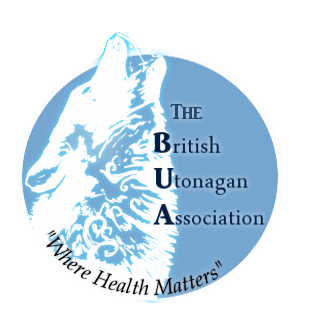
We would like to welcome ALL Utonagan owners and enthusiasts to join us in celebrating this magnificent breed!
Multi-focal Retinal Dysplasia - MRD
We have started researching the possibility of MRD in the Utonagan and are asking all breeders for litter eye screening of their British Utonagans, and all owners to eye screen their dogs to help our research. This is after one of our accredited breeders pioneered this litter health check and has came across a possible gene defect in our lovely breed. The Dam was marked as grey circular & soft veriform folds and the owner was advised about the possibility of MRD on her first eye test but on her second was marked circular rosette lesions as M.R.D on the first test many folds were seen on both eyes . on the second screening there is one small rosette in the right eye and three small rosettes in left .original certificates shown
The first litter of British Utonagan pups ever screened showed up folds in some of the puppies,
and on their second annual eye check most came back clear and one as possible.
PLEASE NOTE MICROCHIP Nos AND ADDRESSES COVERED FOR SECURITY AS THIS IS A PUBLIC DOCUMENT, THIS INFORMATION IS RECORDED AT THE BRITISH UTONAGAN ASSOCIATION AND WITH THE SPECIALISTS RESEARCHING THIS SUBJECT.
These findings proving that it is of paramount importance that we try to get all puppy litters screened as early as possible as once they are older this may go un-noticed. So many Utonagans already tested as adults possibly could have had folds as a puppy but have gone un detected
It has been advised to us that this is a mild form of ( possible ) MRD and if we are able to point out the carriers by DNA testing and frugal eye screening, it is a gene that can be weeded out by careful selective breeding and from this point onwards keeping thorough tests and checks on all dogs concerned there should be no need to pull all stock from the breeding program ( with such a small gene pool all other health screens must be considered ) as long as we ensure against putting two carriers together and that we endeavour eventually to only use clear dogs, as we do have such a small gene pool at present , and also with the complexities of the line-breeding that has led us to the point of ensuring a good foundation type.
The only sure way of gaining this information is by DNA testing for this gene, but as yet there is no genetic test for MRD.
We are at the moment in collaboration with the Animal Health Trust, to research whether or not a test can be evolved to DNA test the British Utonagan for MRD , again making the British Utonagan one of the first in this new and wonderful research that is now available.
INFORMATION
There are 3 forms of retinal dysplasia
i) folding of 1 or more area(s) of the retina. This is the mildest form, and the significance to the dog's vision is unknown.
ii) geographic - areas of thinning, folding and disorganization of the retina.
iii) detached - severe disorganization associated with separation (detachment) of the retina.
The geographic and detached forms cause some degree of visual impairment, or blindness.
Reference:
(University of Prince Edward Island)
Retinal dysplasia is a type of retinal malformation. The word "dysplasia" simply means "a defective development of an organ or structure". Retinal dysplasia occurs when the 2 primitive layers of the retina do not form together properly. Mild dysplasia manifests as folds in the inner retinal layer. These are called "retinal folds". In "geographic" retinal dysplasia there are larger areas of defective retinal development. In the severe form of dysplasia, the 2 retinal layers do not come together at all and retinal detachment occurs. Retinal dysplasia is not progressive. It is a congenital defect and animals are born with as severe a condition as they will ever get.
Retinal folds rarely cause vision problems for the individual dog. They represent small blind spots which are probably not even noticed by the dog.
There have been many questions recently about the certifiability of dogs with retinal folds. Retinal folds may be seen in many breeds and still pass a BVA eye examination. This is due to the fact that the condition is thought either not to be hereditary in the particular breed or has never been shown to be connected to serious (blinding) forms of dysplasia
Reference:
(Veterinary Medical Database)
This can be checked for at a BVA Eye screen examination when the pups are 6-7 weeks, also it is suggested that they be re-tested at 6 months due to the smallness of size and the wriggling that pups may do..
Please go to our DNA test page for details on how you can help with this research, your help would be most appreciated. All samples will be treated with the utmost confidentiality by the Animal Health Trust and all reports given by the Animal Health Trust at this time will be anonymous (ie just numbers).
All Images And Text Copyright To The British Utonagan Association 2007 All Rights Reserved.




